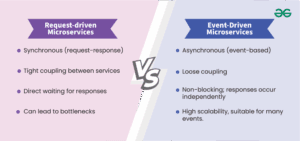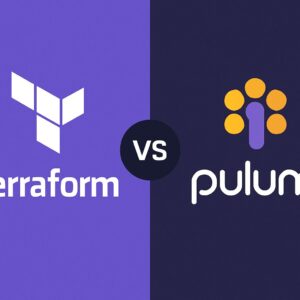In today’s fast-paced and highly competitive business landscape, maximizing efficiency has become crucial for organizations looking to stay ahead. One area where businesses can achieve significant gains in efficiency is through the adoption of multi-cloud architecture. This approach involves the use of multiple cloud platforms to store and manage data, applications, and services. By leveraging a combination of public and private clouds from different providers, organizations can tap into the strengths of each platform while mitigating risk and minimizing costs. In this article, we will explore the various benefits of multi-cloud architecture and how it can help businesses achieve a cost-effective solution. For expert guidance on implementing multi-cloud architecture for your organization, contact SlickFinch, the industry leaders in cloud solutions.
Maximizing Efficiency: How Multi-Cloud Architecture Can Be Cost-Effective

Introduction to Multi-Cloud Architecture
Multi-cloud architecture refers to the practice of using multiple cloud service providers (CSPs) simultaneously to store and manage different aspects of an organization’s data and applications. This approach offers numerous benefits, such as increased flexibility, optimal resource allocation, improved fault tolerance, and enhanced security. In addition to these advantages, multi-cloud architecture can also prove to be cost-effective, enabling organizations to efficiently allocate their cloud budget and optimize their overall cloud strategy.
Benefits of Multi-Cloud Architecture
Lorem ipsum dolor sit amet, consectetur adipiscing elit. Ut elit tellus, luctus nec ullamcorper mattis, pulvinar dapibus leo.
1. Minimizing Vendor Lock-In
Vendor lock-in is a common concern when relying on a single cloud service provider. By adopting a multi-cloud approach, organizations can minimize their dependency on any single vendor and avoid potential issues that may arise due to vendor-specific limitations or changes in pricing models. This allows for more flexibility in choosing cloud providers and reduces the risk of being locked into a particular vendor’s ecosystem.
1.1. Flexibility in Choosing Cloud Providers
With multi-cloud architecture, organizations can carefully select different cloud providers based on their specific requirements, such as cost, performance, geographic location, or specialized services. This flexibility enables organizations to leverage the strengths of each cloud provider and create a customized cloud environment that meets their unique needs.
1.2. Avoiding Dependency on a Single Vendor
Relying on a single cloud vendor for all services can be risky, as it limits an organization’s ability to negotiate favorable pricing or easily switch providers if necessary. By distributing workloads across multiple cloud providers, organizations can mitigate this risk and maintain control over their cloud strategy. This also encourages healthy competition among vendors, which can drive down costs and increase service quality.
2. Optimal Resource Allocation
Multi-cloud architecture allows organizations to leverage the competencies and strengths of different cloud providers. By strategically allocating workloads to the most suitable cloud platform, organizations can optimize resource utilization and improve overall efficiency.
2.1. Leveraging Cloud Provider Competencies
Each cloud provider has its own unique offerings and strengths, whether it’s in terms of storage, computing power, machine learning capabilities, or serverless computing. By selectively utilizing the strengths of each provider, organizations can ensure that their workloads are running on the most appropriate and cost-effective platforms, thereby maximizing efficiency and minimizing costs.
2.2. Balancing Workloads and Performance
Different applications and workloads have varying requirements in terms of performance, latency, and scalability. With a multi-cloud architecture, organizations can distribute these workloads across different cloud providers based on their respective capabilities, ensuring that each workload is running on the most suitable platform and delivering optimal performance. This approach also helps organizations avoid over-provisioning or underutilization of resources, which can result in unnecessary costs.
3. Reducing Downtime and Ensuring High Availability
One of the key advantages of multi-cloud architecture is its ability to enhance fault tolerance and provide high availability. By spreading workloads across multiple cloud providers, organizations can minimize the risk of downtime due to infrastructure failures or outages.
3.1. Implementing Redundancy across Multiple Providers
In a multi-cloud setup, data and applications can be distributed across multiple cloud providers, ensuring redundancy and reducing the impact of any potential service disruptions. By replicating data and applications in multiple locations, organizations can achieve higher levels of resilience and uptime, minimizing the risk of data loss or service interruptions.
3.2. Geographic Distribution for Disaster Recovery
Multi-cloud architecture enables organizations to store data and applications in geographically diverse locations. This allows for effective disaster recovery planning, as organizations can quickly recover and restore their operations in the event of a natural disaster, regional outage, or any other unforeseen event. By leveraging the infrastructure of different cloud providers in different regions, organizations can ensure business continuity and minimize the financial impact of downtime.
4. Optimizing Cost Management
Cost management is a critical aspect of any cloud strategy, and multi-cloud architecture provides organizations with several avenues to optimize costs and reduce their cloud expenditure.
4.1. Utilizing Competitive Pricing Strategies
By leveraging the competitive landscape of multiple cloud providers, organizations can negotiate better pricing and take advantage of cost savings. Competition among providers drives them to offer attractive pricing options, enabling organizations to secure more favorable rates for their services. Additionally, organizations can allocate workloads to the most cost-effective cloud provider based on pricing models, such as pay-as-you-go, reserved instances, or spot instances.
4.2. Taking Advantage of Spot Instances
Spot instances, offered by certain cloud providers, allow organizations to bid for excess cloud capacity at significantly discounted prices. This can be especially beneficial for non-time-sensitive workloads, as it offers substantial cost savings. By utilizing spot instances across multiple cloud providers, organizations can further optimize costs and take advantage of additional capacity when available.
5. Enhancing Security and Compliance
Security and compliance are paramount concerns for organizations when adopting cloud services. With a multi-cloud architecture, organizations can strengthen their security posture and ensure compliance with industry-specific regulations and standards.
5.1. Implementing Advanced Security Measures
Different cloud providers offer varying levels of security features and capabilities. By using multiple cloud providers, organizations can combine the security offerings of each provider to create a more robust and comprehensive security framework. This approach minimizes the risk of a single point of failure and enhances overall data protection.
5.2. Meeting Regulatory and Compliance Requirements
Certain industries have strict regulatory requirements, such as data residency, privacy, or industry-specific security mandates. Multi-cloud architecture enables organizations to adhere to these regulations by leveraging cloud providers with data centers located in specific regions or by employing specialized security services offered by trusted providers. This ensures compliance with legal obligations and reduces the risk of penalties or reputational damage.
6. Simplifying Data Backup and Disaster Recovery
Data backup and disaster recovery are critical aspects of any IT infrastructure. Multi-cloud architecture simplifies and enhances the effectiveness of these processes, allowing organizations to protect their data and applications more efficiently.
6.1. Automation and Centralized Management
By utilizing multiple cloud providers, organizations can streamline data backup and disaster recovery processes through automation and centralized management. Automation enables scheduled backups, replication, and failover across multiple cloud platforms, reducing human intervention and potential errors. Centralized management provides a unified view of backup and recovery operations, simplifying administration and ensuring efficient data protection.
6.2. Implementing Effective Backup Strategies
Multi-cloud architecture allows organizations to implement a diverse range of backup strategies, such as full backups, incremental backups, or differential backups, depending on their specific requirements. Distributing backups across multiple cloud providers adds an extra layer of redundancy and mitigates the risk of data loss or corruption. Different cloud providers also offer various backup and recovery options, such as snapshot-based backups or cold storage, providing organizations with additional flexibility and cost optimization opportunities.

Conclusion
In conclusion, multi-cloud architecture provides organizations with a range of benefits beyond flexibility and fault tolerance. By carefully selecting and leveraging multiple cloud providers, organizations can maximize efficiency and achieve cost-effectiveness in their cloud strategy. From minimizing vendor lock-in to optimal resource allocation, reducing downtime, optimizing cost management, enhancing security, and simplifying data backup and disaster recovery, multi-cloud architecture offers a comprehensive approach to meeting diverse business requirements. SlickFinch, the experts in multi-cloud architecture, can assist organizations in harnessing the power of multiple cloud providers to achieve a cost-effective and efficient cloud infrastructure. Contact SlickFinch today for expert guidance and support in implementing a successful multi-cloud strategy.




